Athletes and Social Media: Master the 2 Edges
Why Athletes and Social Media Create Both Opportunities and Challenges
Athletes and social media have become inseparable, creating a complex landscape of opportunities and risks. The impact is dual-sided:
- Positive effects: Personal branding, fan engagement, NIL monetization, career networking, community building
- Negative effects: Mental health challenges, online harassment, performance pressure, sleep disruption, cyberbullying
As one sports medicine physician noted: “It’s like playing two games at once — one on the field, and one in the feed.” This perfectly captures the dual reality athletes face today.
The numbers tell a stark story. While 58% of young adults follow athletes on social media, the same platforms expose them to unprecedented scrutiny. A recent NCAA study verified over 5,000 abusive messages, with female athletes receiving three times more threats than male athletes. During March Madness, one athlete received over 1,400 abusive messages in just two weeks.
Yet social media isn’t going anywhere. With 93% of teens using YouTube and 41% of sports fans streaming content digitally, these platforms are essential for career advancement. The key is using the benefits while protecting mental well-being.
I’m Samir ElKamouny AV. My work helping businesses and creators steer digital marketing has shown me how athletes and social media intersect. My experience gives me unique insights into how athletes can build meaningful digital communities while protecting their mental health.
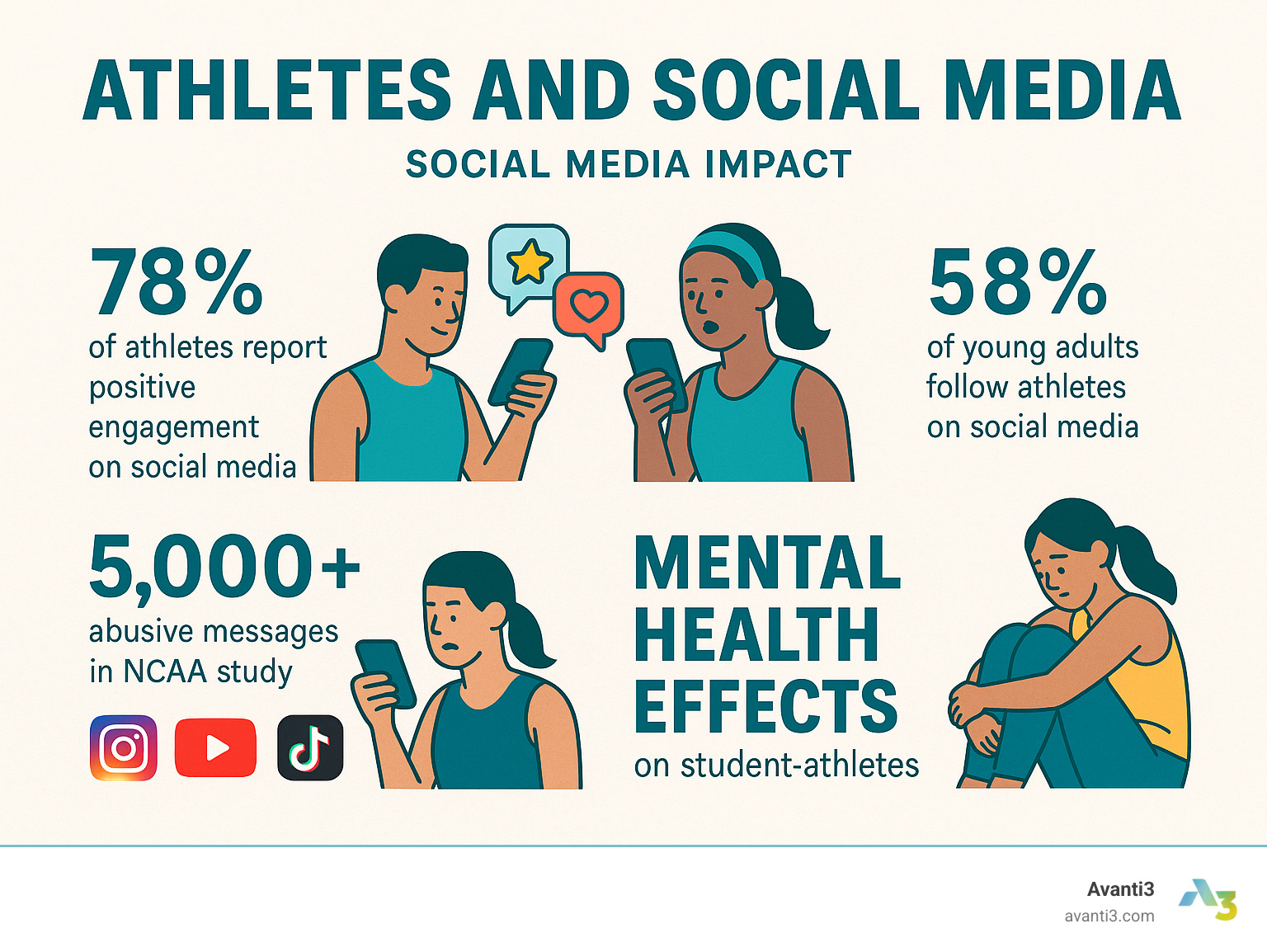
The Upside: Building a Brand and Connecting with Fans
Today, athletes and social media offer a direct line between sports stars and their supporters, replacing the era of TV interviews and autograph signings. Athletes now control their own narrative, sharing training sessions, victories, and vulnerable moments directly with fans. This raw access creates authentic connections.
This shift has professional benefits, with one in five student-athletes using social media for career networking. Their profiles act as a digital resume and brand portfolio. Beyond careers, athletes use their platforms for social advocacy, championing causes and becoming community leaders.
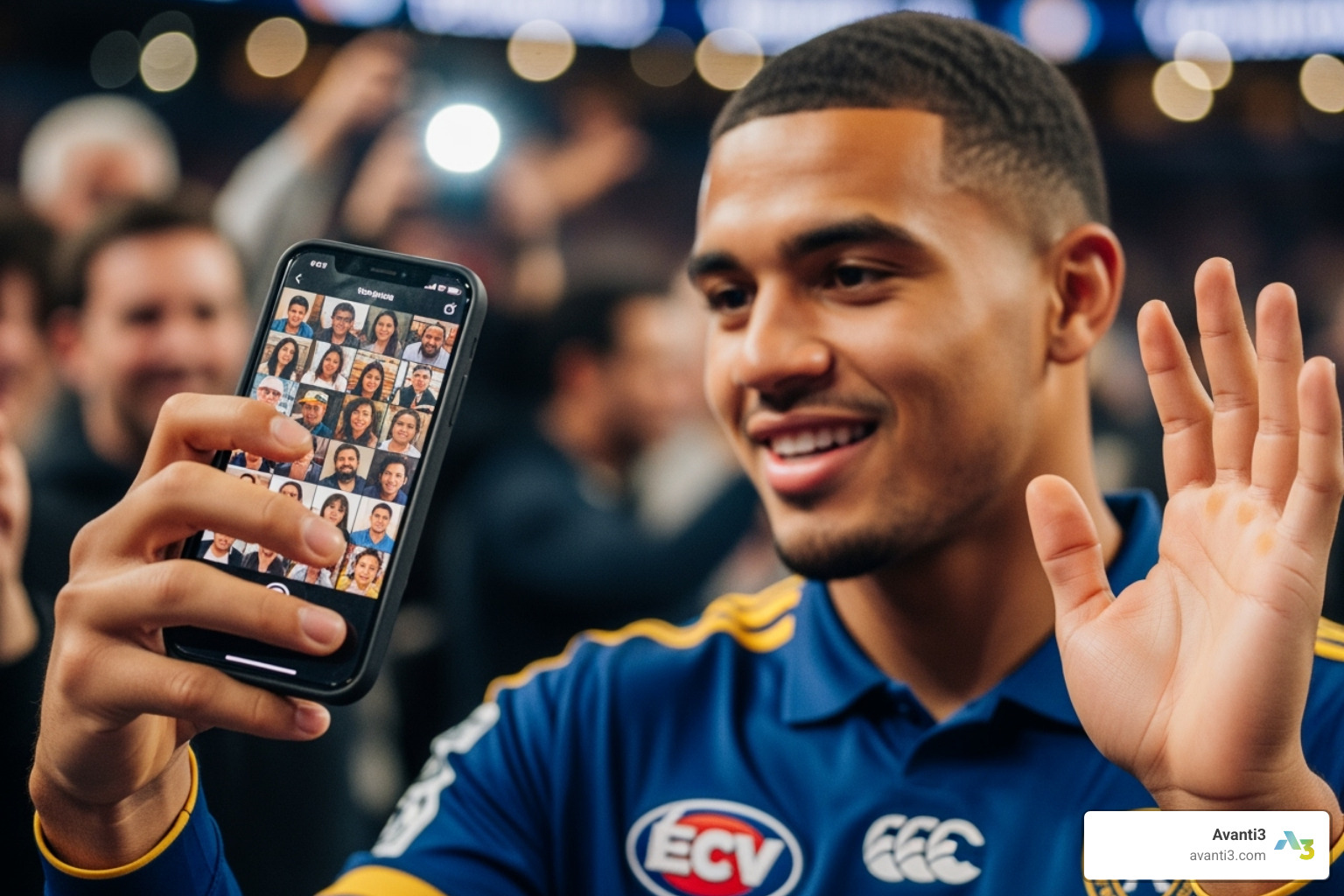
Leveraging NIL opportunities with athletes and social media
The arrival of Name, Image, and Likeness (NIL) rules completely changed the game, allowing college athletes to monetize their social media following. An Instagram account is now a business tool.
The earning potential is massive, with top figures like Cristiano Ronaldo (580 million followers) and organizations like the NBA (88 million) and Real Madrid (134 million) commanding huge audiences. However, you don’t need to be a superstar to benefit. College athletes with a strategic presence across multiple channels earn more, proving that a smart digital footprint has real value.
Athletes are also using their platforms for social impact, launching campaigns to support charitable causes. This demonstrates how athletes and social media can create win-win situations, building a personal brand while doing good. The key is a professional approach, as every post shapes public identity.
For more insights on maximizing your social media impact, check out this helpful guide: More info about how athletes can optimize social media.
Changing Fan Engagement and the Sports Industry
Social media has transformed the entire sports experience from a one-way broadcast to an interactive, always-on conversation. Fans crave the authentic, behind-the-scenes access that social media provides, creating a year-round connection to teams and players.
Viewing habits have shifted dramatically. 41% of global sports fans now stream live sports digitally, and 32% of fans (43% of Gen Z) use social media while watching games. This “second-screen experience” involves live-tweeting, sharing stories, and watching highlights simultaneously.
Sports content consumption is exploding on platforms like TikTok and Twitch, which saw 30% and 21% growth respectively between 2020 and 2021. Fans primarily use Facebook (51%), YouTube (46%), Instagram (31%), and Twitter (25%) to follow sports. This multi-platform culture has created a global fan base that transcends geography.
Leagues that master digital content are winning at fan engagement. One basketball league kept 1.6 billion followers engaged during a stoppage by releasing memorable content. This shift to authentic, interactive experiences brings fans closer to the action than ever before.
The Downside: The Mental Toll of Constant Scrutiny
The bright lights of social media can cast dark shadows. While athletes and social media create opportunities, they also present a mental health challenge that is impossible to ignore. The same platforms that build careers can create a pressure cooker environment that harms even the toughest competitors.
Athletes already face intense performance pressure; social media adds thousands of strangers commenting on every move. The U.S. Surgeon General has warned about social media’s impact on youth mental health, a crisis that hits athletes harder due to constant scrutiny.
This environment fosters a “perfection trap,” where athletes feel pressured to maintain a flawless online image. A bad game becomes a trending topic, and the mental load is overwhelming. What should be a mental break often becomes an anxiety-inducing scroll, fueled by the fear of missing out (FOMO) as they see competitors’ achievements.
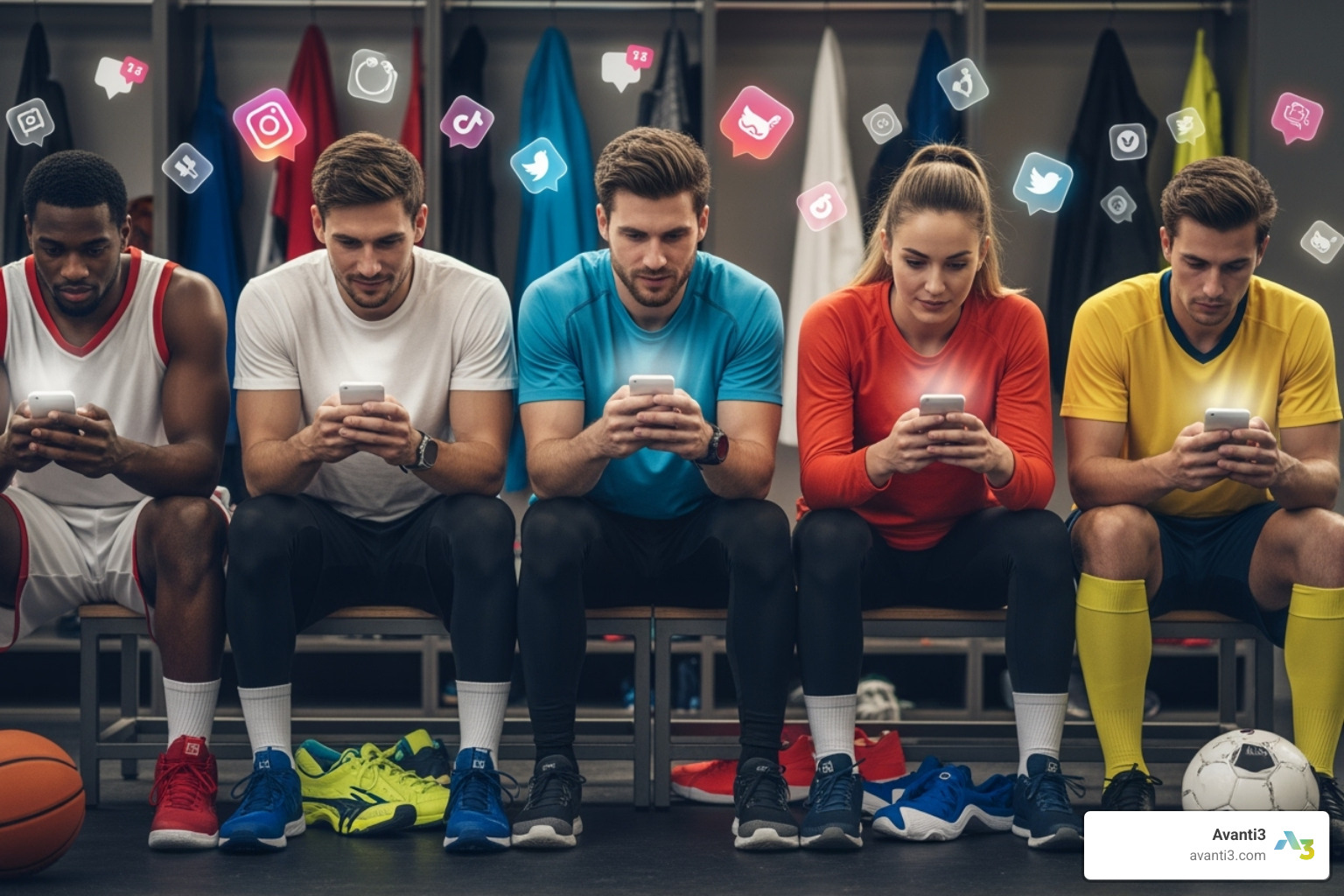
The unique pressures of athletes and social media comparison
Social media creates a dangerous comparison culture by turning everyone’s feed into a highlight reel. Athletes compare their behind-the-scenes reality to the curated posts of others, leading to a crushing sense of inadequacy. This constant exposure to everyone else’s best moments creates an unrealistic benchmark.
The pressure is intensified by global competition visibility, with no escape from seeing others succeed. This can cause increased anxiety and negative self-perception. This culture also amplifies biases related to gender, race, and sexual orientation. A 2021 NCAA study found that 38% of female athletes and 22% of male athletes felt overwhelmed by anxiety, with social media as a major factor.
For deeper insights into how this comparison culture affects athletes, check out these expert insights on the culture of comparison.
The Link Between Screen Time, Sleep, and Performance
A late-night scroll can sabotage athletic performance. For athletes, sleep is crucial for muscle repair, memory consolidation, and peak performance. Social media before bed causes “cognitive arousal,” keeping the mind active when it should be winding down.
Research shows that daily media usage over two hours decreases sleep duration. For athletes, this starts a vicious cycle: less sleep leads to slower recovery, decreased performance, and more stress. The blue light from screens worsens this by interfering with melatonin production.
A recent study found that longer TikTok usage was directly related to impaired recovery, sleep, and higher stress levels in young athletes. Reduced sleep quality and mental fatigue from social media overuse can slow reaction times, fog decision-making, and hinder physical recovery.
For more detailed information on this connection, explore this scientific research on media use and sleep in adolescents.
Navigating the Gauntlet: Online Abuse and Harassment
The darker side of athletes and social media is the widespread online abuse that turns digital platforms into hostile territories. Athletes face cyberbullying, racist attacks, sexual harassment, and even violent threats. Over 40% of professional athletes report experiencing online harassment.
This abuse is dangerous to mental health, leading to stress, depression, and suicidal thoughts, with young athletes being particularly vulnerable. The anonymity of social media emboldens abusers to send messages they would never say in person.
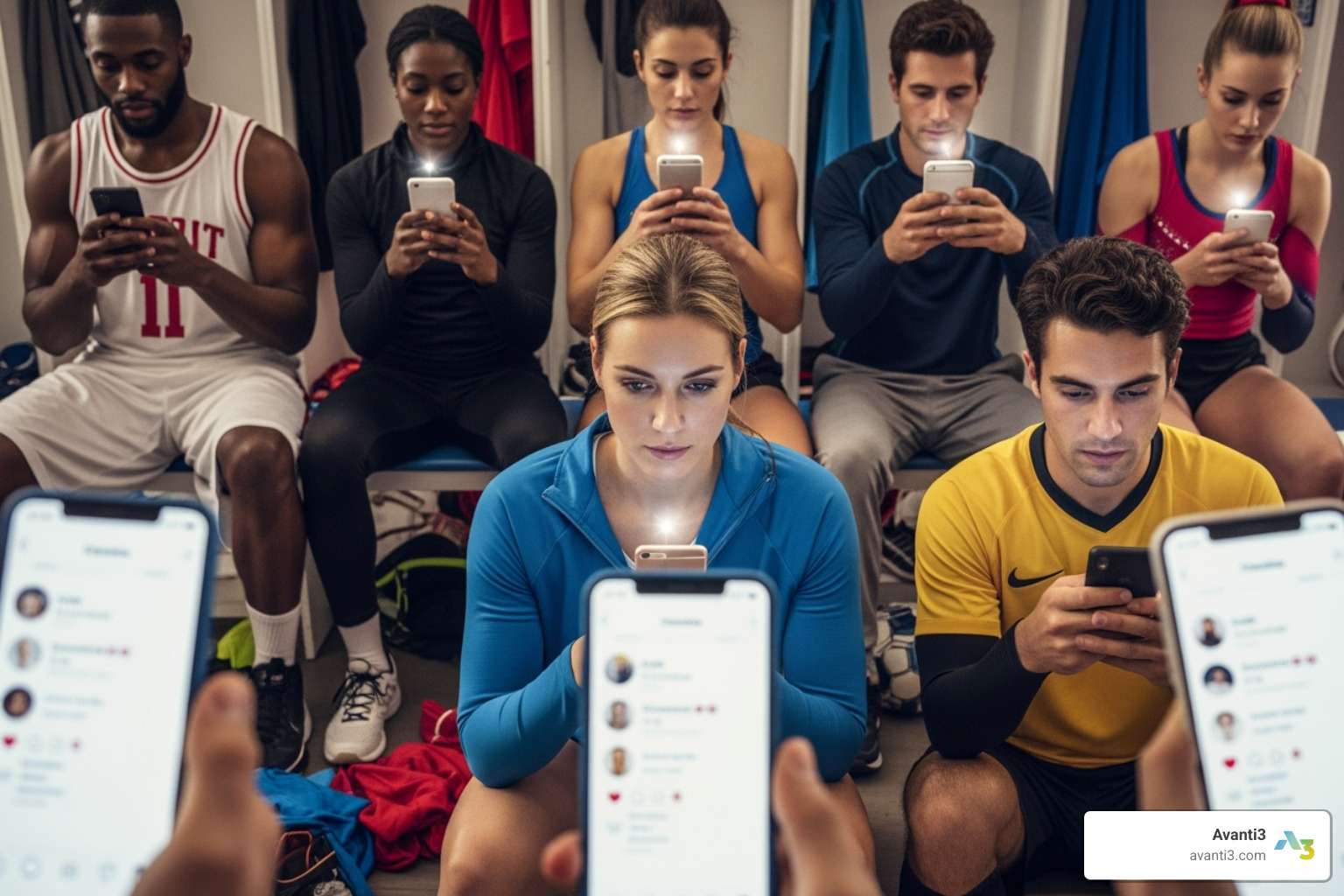
The Alarming Rise of Betting-Related Harassment
A disturbing trend is the rise of abuse from angry sports bettors. An NCAA study with Signify Group’s Threat Matrix service found that of 1.3 million posts monitored, over 5,000 were verified as abusive.
Alarmingly, 12% of all abuse was directly related to sports betting, a figure that jumps to 19% for men’s basketball and football. During March Madness, over 540 abusive betting-related messages, including death threats, were sent to student-athletes and officials. One student-athlete received over 1,400 abusive messages in under two weeks. This unacceptable behavior threatens the foundation of collegiate athletics.
For the complete analysis of these disturbing findings, you can read The NCAA’s complete analysis of online harassment.
Disproportionate Abuse Towards Female Athletes
The NCAA study also revealed that female athletes bear a disproportionate burden of online abuse. While sexual abuse made up 18% of all harassment, the disparities in specific events were stark. Women’s basketball athletes received approximately three times more threats than their male counterparts.
Female athletes in softball championships received 100% more messages alleging cheating than men. During the Women’s Gymnastics Championships, 92% of flagged sexual messages came from bot accounts, suggesting coordinated harassment campaigns. Furthermore, homophobic and transphobic content consistently targeted female athletes, with rates as high as 22% in women’s volleyball.
This pattern shows that female athletes face a double burden: on top of performance pressures, they endure gender-specific attacks that question their legitimacy and sexualize their bodies. This toxic environment risks driving talented female athletes away from the sport.
Winning Off the Field: Strategies for a Healthy Digital Life
The good news is that athletes and social media don’t have to be a battleground. With a proper game plan, athletes can turn these platforms into tools for success. The key is being intentional.
Start by setting boundaries, like creating “digital off days” or setting daily time limits. Curate your feed to be a source of inspiration, not negativity, by unfollowing accounts that make you feel bad. Use the block and report functions liberally to remove abusive or negative users from your space. Most importantly, seeking help from a sports psychologist or counselor is a sign of strength.
The Role of the Support System: Coaches, Parents, and Organizations
A shocking 50% of student athletes have no social media training, leaving them vulnerable. This is where the support system becomes critical.
- Coaches should establish clear team policies, model healthy behavior, and foster open discussions about digital citizenship.
- Parents can help by having regular, open conversations about online challenges and being mindful of their own posting habits to avoid adding pressure. For guidance, see: How parents can avoid oversharing.
- Sports organizations must provide comprehensive training, mental health resources, and advocate for better platform protections.
Practical Tips for Athletes
Here are essential strategies for navigating athletes and social media successfully:
- Think before you post: Everything online is permanent. Ask if you’d be comfortable with a future employer seeing it.
- Protect your personal information: Avoid sharing your exact location or sensitive details in real-time.
- Consider separate accounts: Use a public account for your brand and a private one for close friends.
- Turn off notifications: Minimize disruptions during training, competitions, and before bed.
- Prioritize real-world connections: Online interactions can’t replace face-to-face time with your support system.
- Be mindful of your emotional state: Avoid engaging online when you’re stressed or upset.
- Know your support system: Reach out to parents, coaches, or medical staff when you feel overwhelmed.
By implementing these strategies, athletes can control their digital experience, using the benefits while protecting their well-being.
The Future of Fan Engagement: Beyond Likes and Follows
The landscape of athletes and social media is evolving beyond likes and follows toward more immersive, personalized, and rewarding interactions. Imagine stepping into a virtual locker room with a player via AR/VR or owning a piece of sports history through digital collectibles.
Web3 technologies are driving this change. NFTs offer authentic ownership of digital moments, blockchain ensures transparency, and AI-powered tools help athletes create more resonant content. The focus is shifting from follower counts to building deeper community connections where fans feel like active participants.
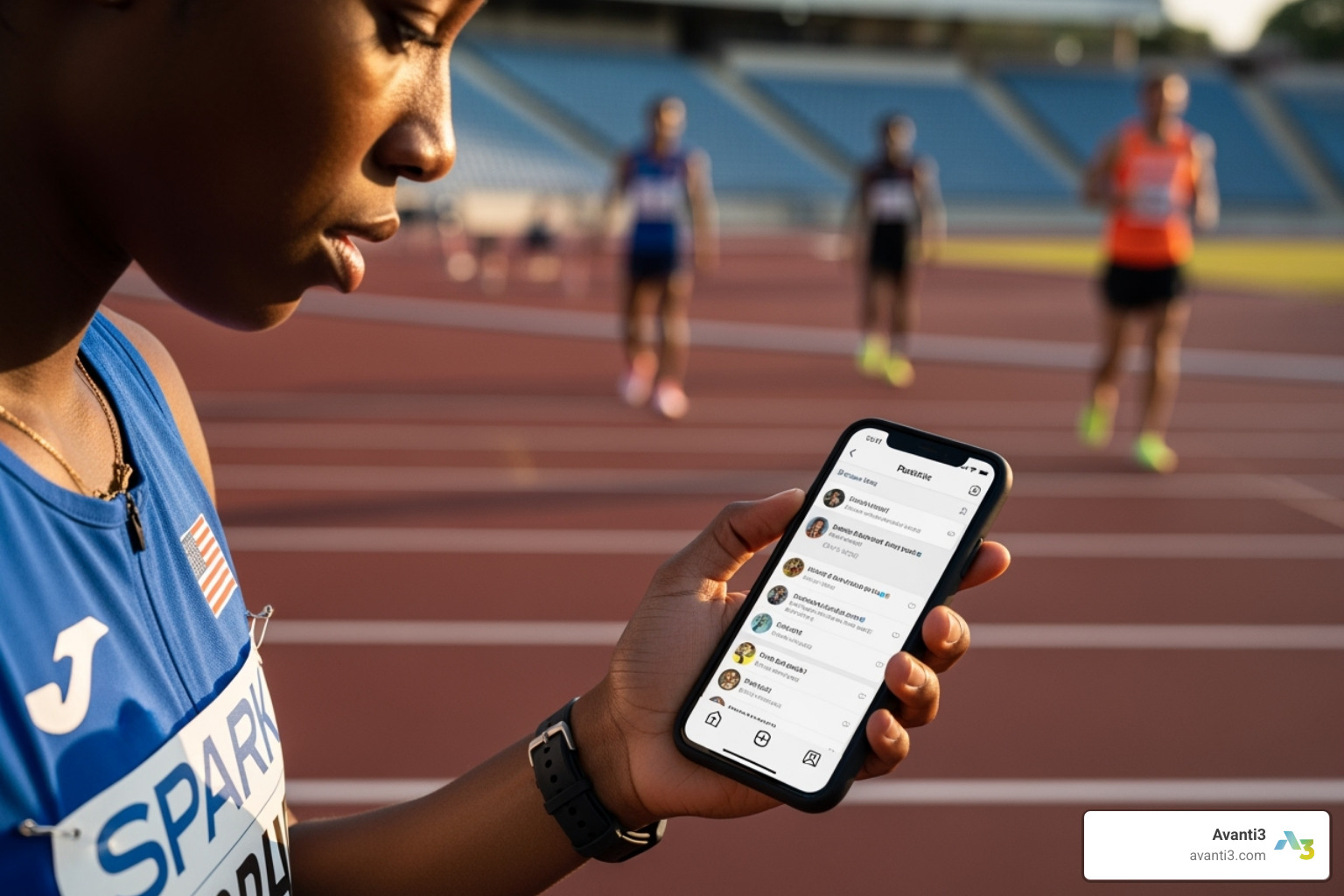
Empowering Athletes and Monetizing Fandom
This digital revolution empowers athletes by enabling new revenue streams that connect them directly with fans. An athlete can release limited-edition digital collectibles from a championship win, allowing fans to own a piece of the moment while the athlete captures value directly.
Blockchain-based reward systems can offer loyal fans exclusive access to training footage, virtual meet-and-greets, or merchandise. These customizable fan experiences are designed to match what each community values.
This shift gives creators more power, allowing athletes to build direct, monetizable relationships with fans and maintain control over their brand. They are no longer just posting content; they are creating valuable digital experiences. This evolution turns athletes and social media from a source of stress into a platform for authentic community building, creating meaningful relationships that benefit everyone.
Conclusion
The relationship between athletes and social media is a defining feature of modern sports, offering incredible opportunities alongside genuine challenges. It has transformed athletes into brand builders and opened new revenue streams through the NIL revolution, creating a 24/7 interactive experience for fans.
However, the darker side is serious. Mental health is threatened by constant scrutiny, comparison culture, and online abuse, including the alarming rise in betting-related harassment. The disproportionate abuse faced by female athletes underscores that this is an issue of human dignity, not just sports.
The solution is not to abandon social media, but to build robust support systems. With half of student-athletes receiving no social media training, coaches, parents, and organizations must provide education, boundaries, and mental health resources.
Fortunately, the future of athletes and social media is becoming more athlete-empowered. Web3 technologies like NFTs and blockchain are giving athletes more control over their digital destiny, turning them into entrepreneurs who can build direct relationships with fans.
By prioritizing mental wellness and creating strong support systems, we can help athletes harness the power of social media to win both on and off the field. The goal is to seize the opportunities while protecting the humans behind the highlights.
For comprehensive guidance on navigating these challenges and building healthier relationships with sports and social media, explore TrueSport’s comprehensive collection of resources.








